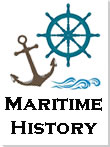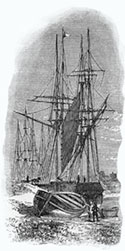Maritime History of Newport
By Peter Brown
© Peter Brown 2024
Early industrialisation in Caerleon
The earliest industrialisation in Newport occurred at Caerleon rather than in Newport itself. The old port at Caerleon was still served – as the Medieval trade was – by the quayside next to the Hanbury Arms. This was before the present bridge was constructed in 1806, when the old bridge crossed the river just north of the Hanbury Arms, as it did in Roman times.
The Hanbury family of Pontypool began using the port of Caerleon by 1700, and tinplate making began at Caerleon Forge around 1720. In 1770, a tramway was built from the forges at Cwmbran to the quayside at Caerleon, picking up the products of the Caerleon forge and the tinplate works at Ponthir on the way. It was expected that the port of Caerleon would continue to thrive, serving the increasing output of developing industry in Monmouthshire. However, in 1791 it was proposed to construct a canal from above Pontypool down to the River Usk at Newport, with a branch from Crumlin joining it just north of Newport. This resulted from the increasing output of the collieries and iron works in the north of the county, which desperately needed a more efficient sea outlet for their products.
In the early 19th century, at the time of William Coxe's visit to the area, there was also a forge at Trostrey, near Kemeys Commander, from which bar iron was sent by road to “Tredunnock bridge” (near Newbridge on Usk) for conveyance down river to Newport and onward for export to Bristol.
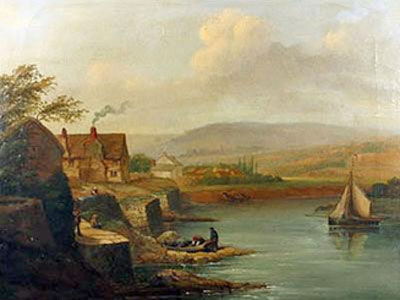
The Quay by the Hanbury Arms in Caerleon
Oil Painting by Ellen Richardson in 1862, after removing the old timber bridge near the Hanbury Arms.
In the collection of Newport Musem and Art Gallery.
The canal's opening in 1796 led to the vast expansion of trade through Newport but also rendered the facilities at Caerleon almost obsolete. The old quays at Caerleon did continue to handle some trade for many more years, but they were unable to compete commercially with the growth of Newport. The present bridge was opened in 1806, a short distance downstream from the old timber bridge, with the tramway being extended in 1808 to quays below the new bridge. The vessel Iron and Tin Trader continued to carry away the products from the tinplate works for several years, and a weekly market boat, run by the Gething family (who came from Brockweir), continued to operate barges and a ferry that carried passengers to Bristol. The Gethings then withdrew and moved to Newport, where they continued in the maritime trade for several years. The last water traffic from Caerleon ended in 1873.
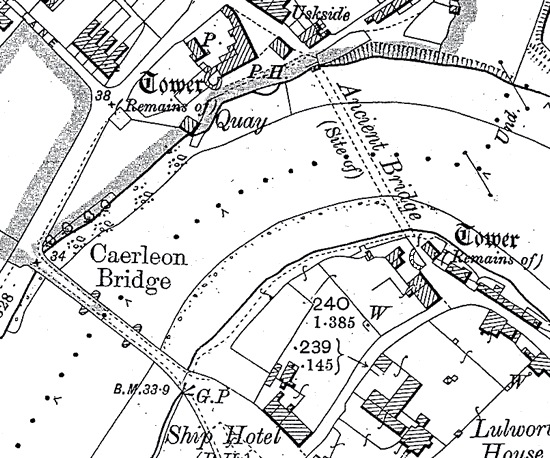
The 1901 Ordnance Survey map of Caerleon shows the position of the quay and slipway near the Hanbury Arms and between the old and later bridges. The tramway and shipping had ceased to function by this time.
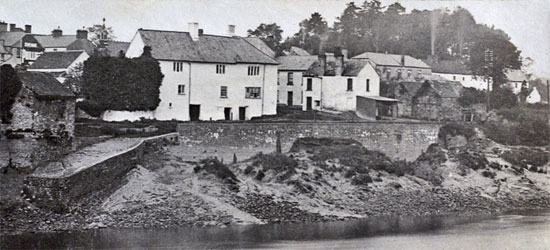
The quayside and slipway at Caerleon, c1910.
Photo by William Henry Thomas.
Sources
Caerleon.net website https://www.caerleon.net
Grace’s Guide to British Industrial History, ‘Caerleon Forge’.
Online at: https://www.gracesguide.co.uk/Caerleon_Forge
Green, Colin The Port of Caerleon
Online at: https://www.caerleon.net/history/port/
Hando, F. J., (1951) Journeys in Gwent, Newport: R. H. Johns, Chapter 1 - Springtime Pilgrimage: Trostrey and Kemeys Commander.
Kennerley, E. (1979) ‘River Trade and Shipping in Caerleon from the 16th to the 19th Century’, Gwent Local History, 47.
Online at: http://www.caerleon.net/archive/literature/glh/47river.htm
Kennerley, E. (1980) ’Caerleon Mills and Ponthir Tinplate Works’, Gwent Local History, 49, Autumn. Online at: http://www.caerleon.net/archive/literature/glh/49tin.htm
Back to Index of Peter Brown's "Maritime History of Newport "
